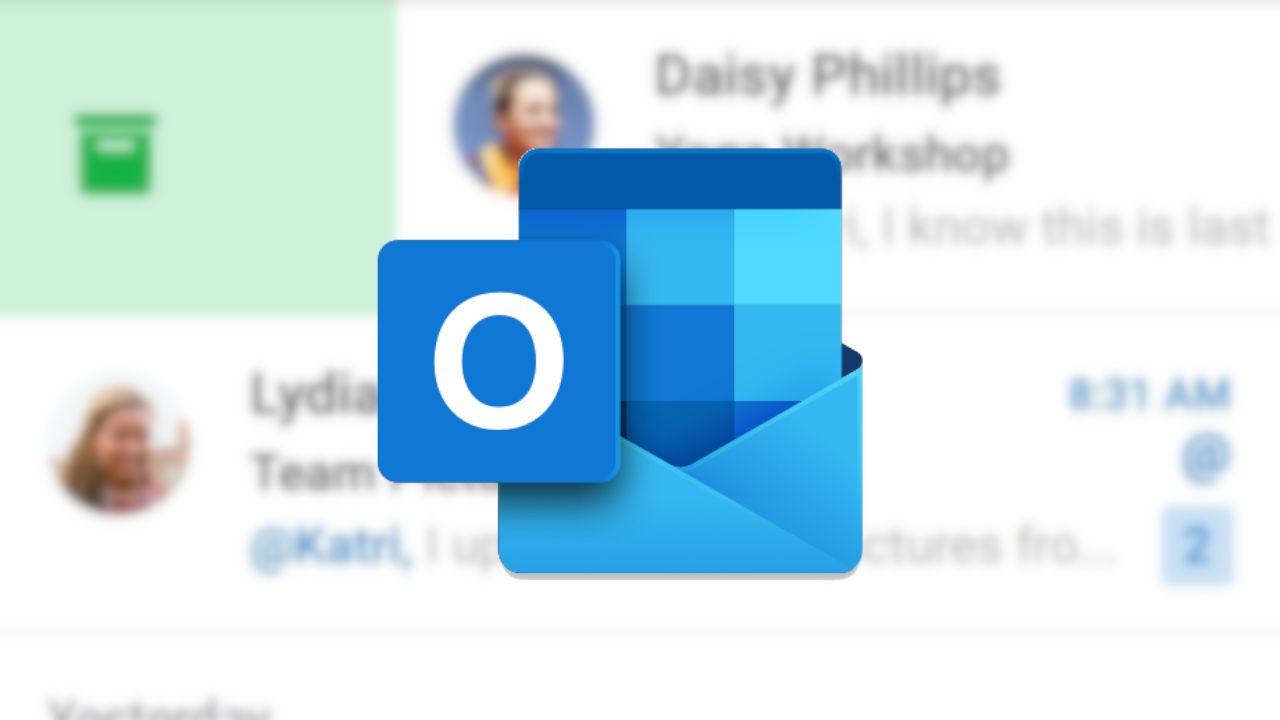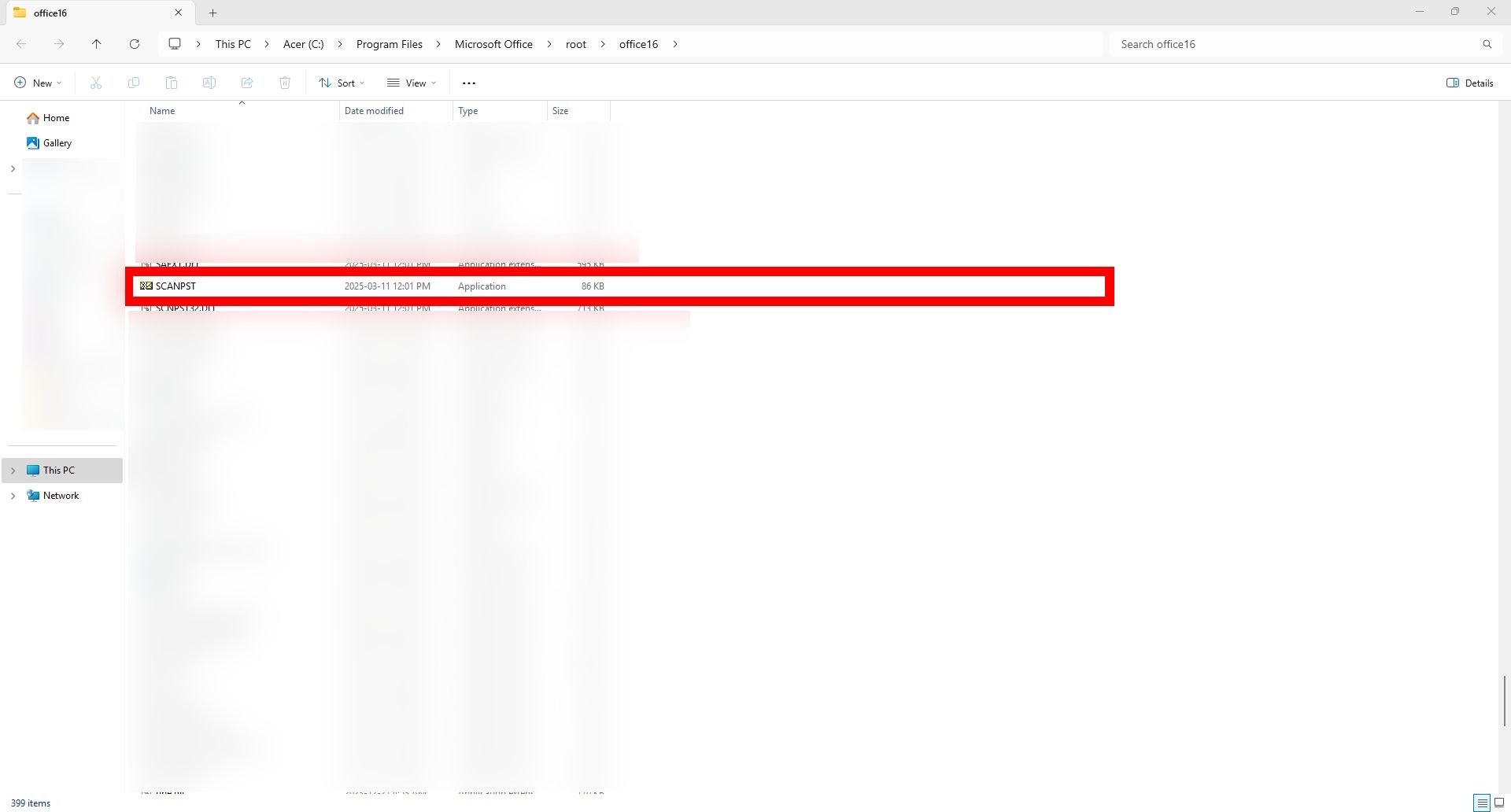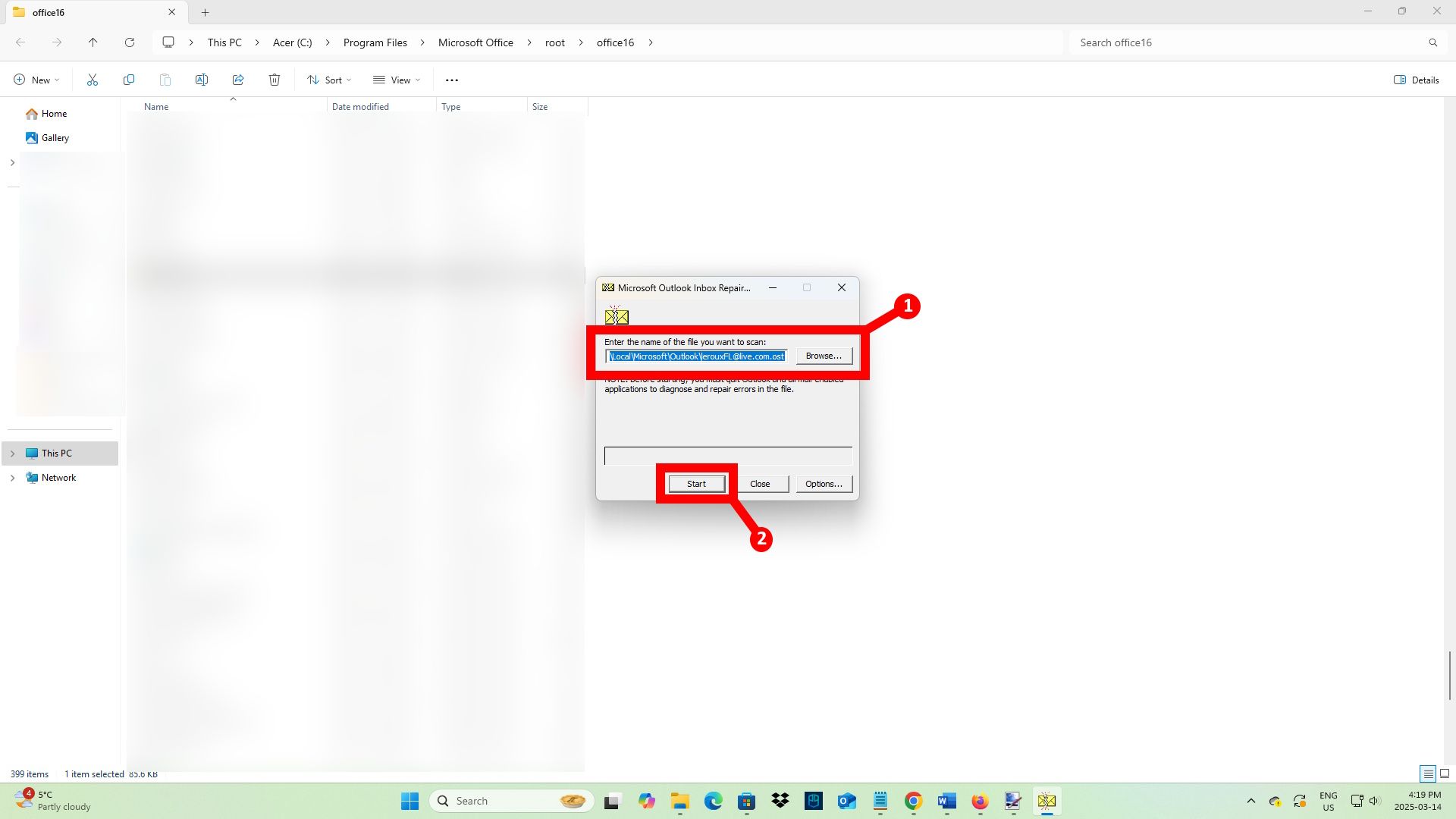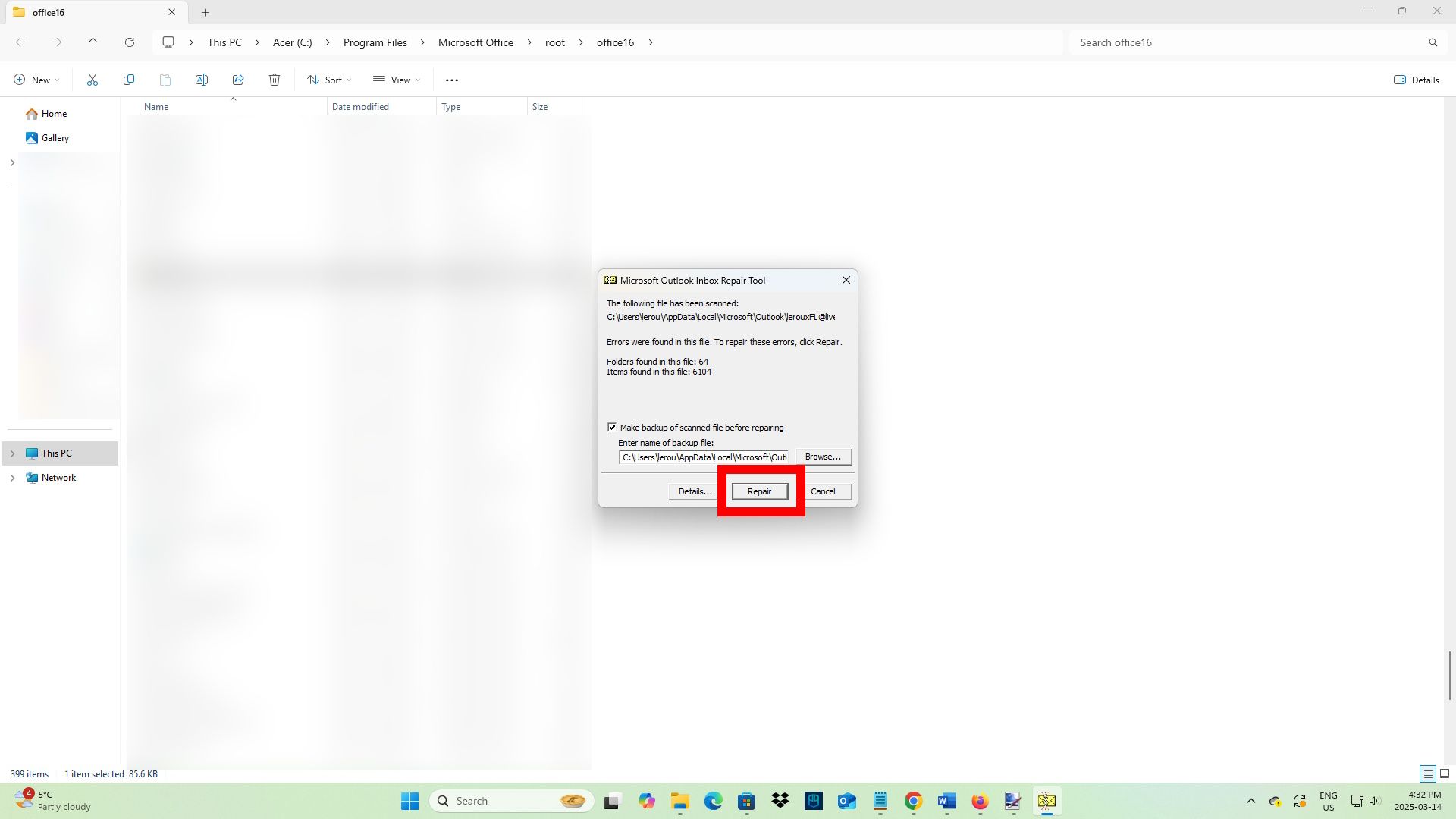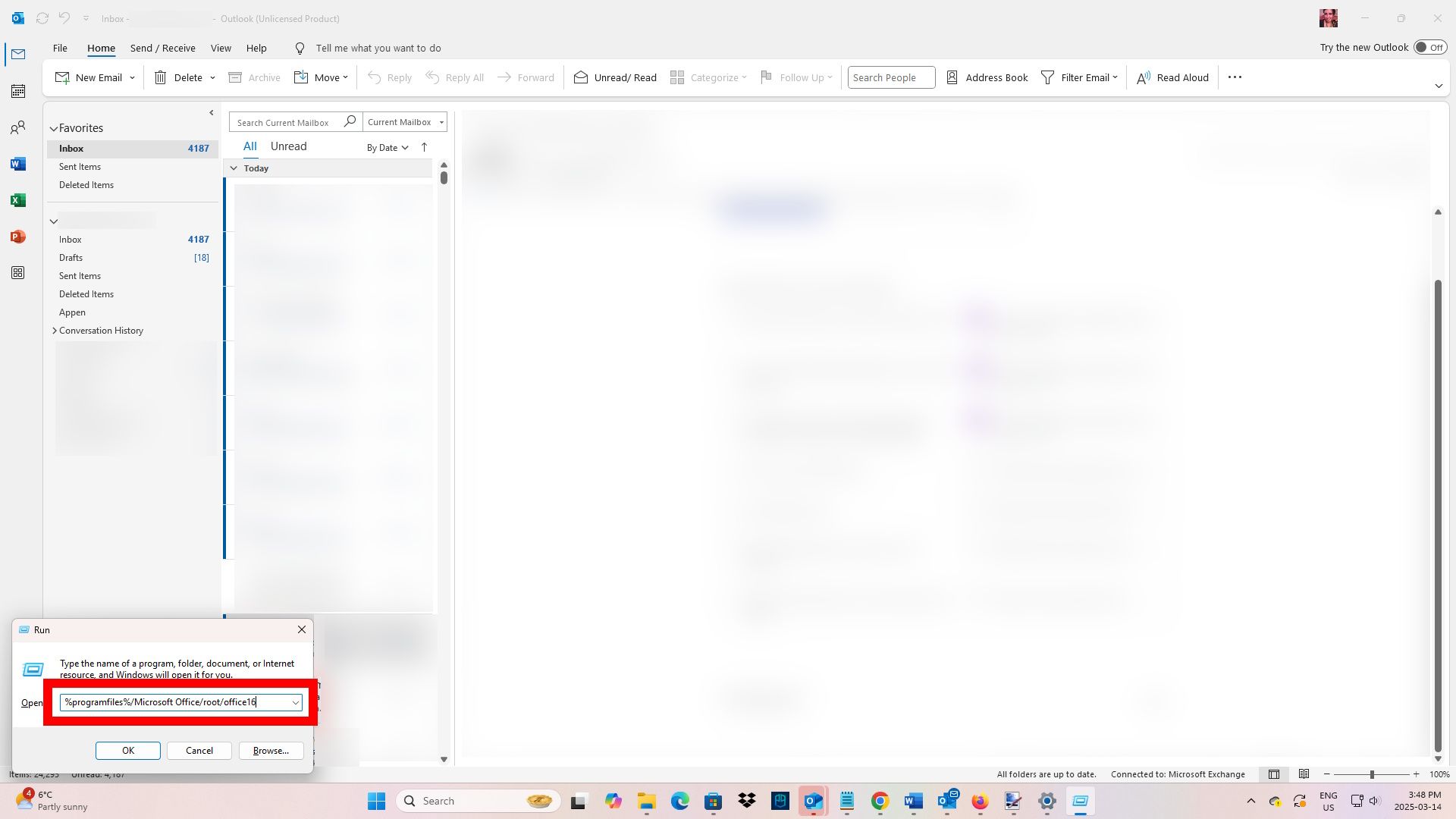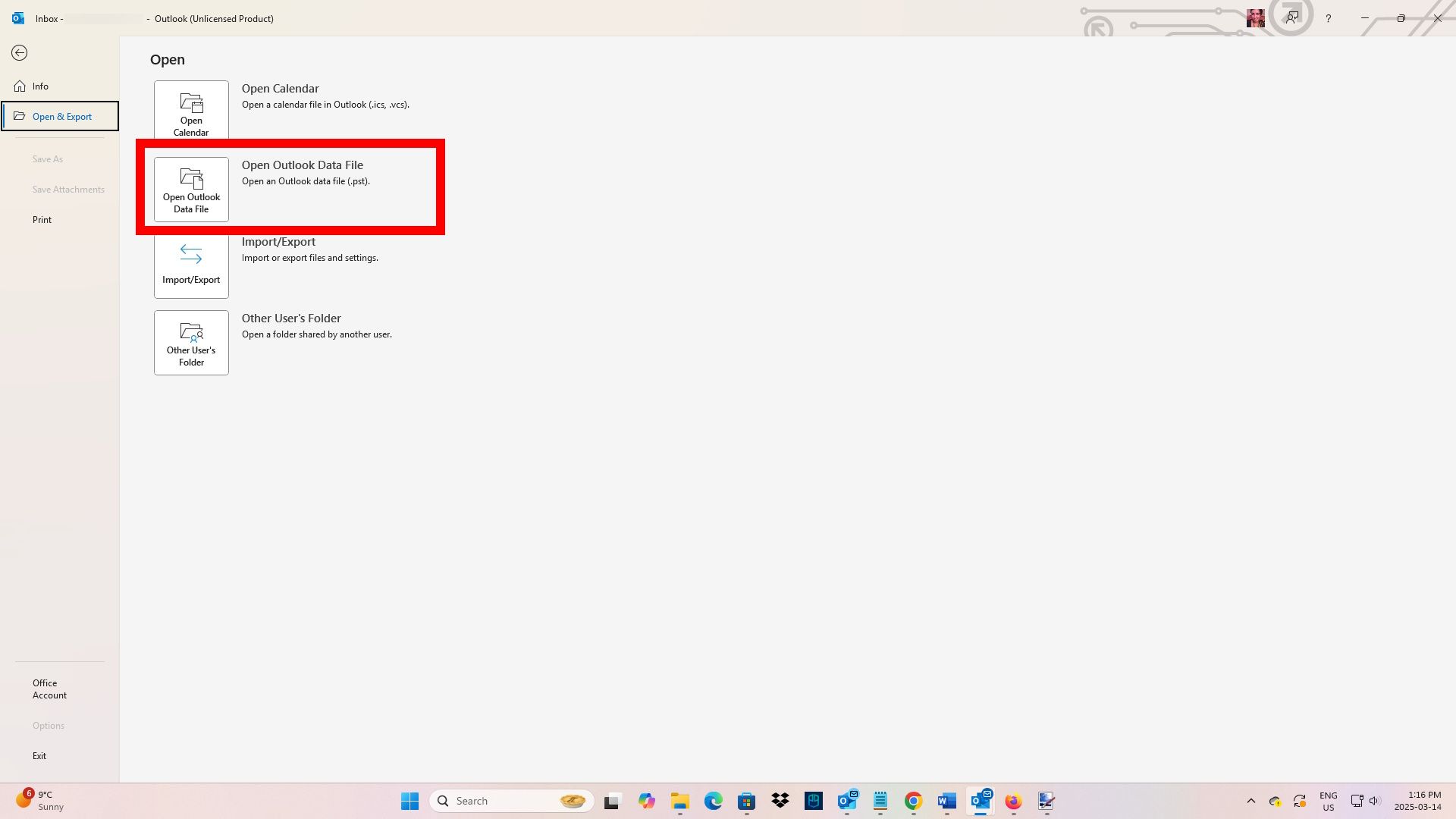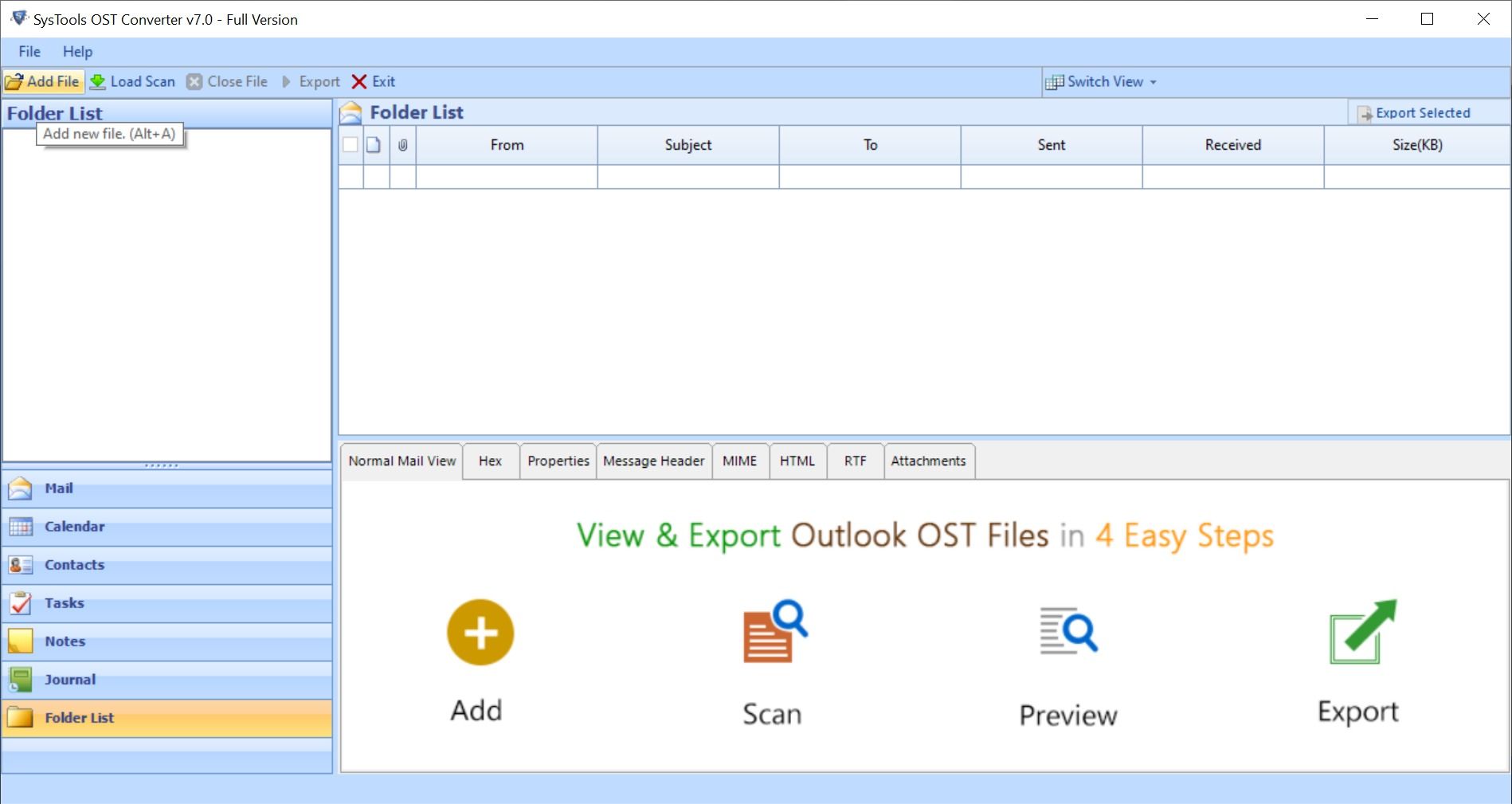Microsoft Outlook is a personal information manager for emails, calendars, and contacts. Outlook emails may contain crucial information, such as meeting schedules and contacts, so it is wise to back them up. You can do so by creating an archive. While offline, you can also access your backed-up files through the Cached Exchange Mode on your computer. Just note that these are reserved mainly for the desktop version and don’t include your Chromebook (your Chromebook relies on Outlook.com).
But what happens if these files become compromised, and you can no longer access their information? Not all hope is lost, as Microsoft has some built-in tools to help you recover it, which we will show you how to do in this guide.
Our guide references steps using Outlook Classic on a Windows desktop. If you use Outlook New, you won’t have a File tab (it is missing in the layout).
What data file types does Outlook support?
While working with Outlook, you will encounter two data file types: OST and PST. OST (Offline Storage Table) file types allow you to work offline. It does this by synchronizing the changes with the Microsoft Exchange Server once you return online. On the other hand, PST (Personal Storage Table file) files store emails, contacts, calendar items, and other Outlook data locally. You can download and export any of these files for your personal safekeeping. However, like any regular data file, it can become corrupted, resulting in a loss of data or inability to access it. Thankfully, there are recovery methods you can use.
The legacy version of Outlook on Mac computers will only save mailbox data in an SQLite database, which you can use to create an OLM file to archive your data.
Signs that your Outlook data file is corrupted
Your Outlook Data file may be corrupted if you see any of the following:
- Outlook can’t open your data file
- Outlook can’t open the set of folders
- Emails can’t sync to Outlook.com
- Unable to use Outlook data file (.pst) format
- Unexpected shutdowns
- Error message: The file [filename].pst cannot be accessed
- Error message: Outlook has detected errors in your data file
- Outlook crashes and freezes while working with the data file
- Missing Emails, contacts, calendar entries in the Outlook data file
- Unusual delays while opening or navigating folders within the Outlook data file
- Duplicated or repeated emails, contacts, calendar entries
Why is my Outlook data file corrupted?
Several factors could lead to data corruption in an Outlook file. Factors include, but are not limited to, unwarranted system crashes (including your hard drive), power failures, improper termination of Outlook (not closing down properly), malware, oversized PST files, network connectivity issues (OST files), incompatible add-ins, and outdated software causing bugs and instability.
We can teach you how to repair a corrupted file, but to prevent it from happening to other files, we recommend investigating the root cause of the corruption. For example, suppose your device is infected with malware. In that case, you may need to take harsh steps to remove it, as leaving it unattended can harm system files and exploit sensitive information.
Repair a corrupted data file with the Inbox Repair tool
Microsoft includes a PST repair tool after you’ve installed Outlook. You can use it to repair various Outlook errors.
Before proceeding to the steps below, consider backing up your Outlook data file. The Inbox Repair tool should also create backups before you begin the repair process. Whether you backed up the data file manually or with the Inbox Repair tool, we recommend remembering the backup location.
You can find your Outlook data files by navigating to the Data Files tab via File > Open & Export > Open Outlook Data File. If you use Outlook New, you won’t have a File tab. Instead, you have to visit Settings > General > Outlook Data Files. Once you know the corrupted file’s location, we can launch an executable file, ScanPST, in the Microsoft Office folder.
Ensure all Outlook instances are closed. These steps will not work if Outlook is open.
- Open File Explorer.
- Search Program Files (x86) or Program Files and locate Microsoft Office.
- Click root > Office (whichever version you own)
-
Open ScanPST.exe.
- Enter the name of the corrupted file; you can also click Browse to find its location.
-
Click Start.
-
Wait for the initializing process to finish. Click Repair.
- Once the repair is finished, re-open Outlook.
Alternatively, you can open the Run dialog box to search for ScanPST executable:
- Press the Windows key + R.
-
Enter %programfiles%/Microsoft Office/root/office. The “office” should include the Office version you have. For example, if you own Office 19, you’d input %programfiles%/Microsoft Office/root/office16 in the dialog box. All Office versions released after Office 16 are found in this folder.
- Click Ok.
- Once found, follow the steps above to start using the Inbox Repair tool.
According to Microsoft, the Inbox Repair tool doesn’t connect to or analyze data stored in an Exchange mailbox. It only looks for errors (corruption) and, if there are any, permits those tools to fix them. Also, if you placed the corrupted PST file in your In-Place Archive folder, it may trigger an automatic repair attempt.
Related
How to import emails, contacts, and appointments into Gmail from an Outlook PST file
Migrate your Outlook data in one go
Recreate the Outlook data file
For Outlook data stored on the server side, you can simply delete and recreate the file to fix the issue. Then, sync the contents back to the mailbox. It works for both PST and OST file types. Here’s how to do it:
- Open Outlook.
-
Click File tab > Open & Export. If using Outlook New, navigate to Settings > General.
-
Select Open Outlook Data File. If using Outlook New, select Outlook Data Files.
- Locate the corrupted Outlook data file.
- Choose the PST/OST file and delete it.
- Relaunch Outlook.
Convert OST file types to PST
You can also try converting OST files to PST using a converter tool like SysTools OST to PST Converter, which you can download from the Microsoft Store. Converting the file to a PST can help salvage the data before losing it entirely.
Operate Outlook in Safe Mode
Your Outlook Data File might be corrupted because of incompatible add-ons running in Outlook. We advise you to check by using the Safe Mode option.
- Press the Windows key + R.
- Type Outlook.exe /safe, and click OK.
- Select Outlook in the Profile dropdown menu.
- Click Ok.
Re-check the data files to see if the issue has resolved itself. If it does, try disabling your add-ons the next time you launch Outlook.
Outlook app has more tricks up its sleeves
Even with big players like Gmail, Outlook is a favorite among Android users. The app integrates well with other cloud services, so storing files in other online storage apps like Dropbox is easy. Plus, you can safeguard your messages by toggling an App lock in your settings. Just note that if you are a frequent app user, you cannot import and export PST files inside the app.


